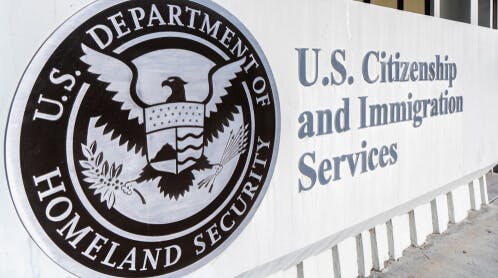The lawsuit challenges the recent USCIS redeployment “guidance” which retroactively prohibits the redeployment of capital outside of the geographic territory of a regional center. In this particular case, 188 investors and their families are at risk. The lawsuit argues that the new policy is “arbitrary and capricious,” published in violation of the notice and comment rule-making requirements of the Administrative Procedure Act, and is not legally binding as it was adopted under the the leadership of Kenneth Cuccinelli, who was not lawfully appointed to be Acting Director of USCIS.
Who is being sued
The defendants are Alejandro Mayorkas, Secretary of U.S. Department of Homeland Security; Tracy Renaud, Director of U.S. Citizenship and Immigration Services; Sarah Kendall, Chief of Immigrant Investor Program Office of U.S. Citizenship and Immigration Services; and U.S. Citizenship and Immigration Services.
EB-5 redeployment
At the heart of this case is the issue is the issue of redeployment. This must happen when an investor’s capital is returned to the NCE by the job-creating enterprise (JCE) before before the end of the investor’s conditional permanent residency. As the investor’s capital must remain “at risk” till the completion of conditional permanent residency, the NCE then redeploys the money into a new investment. It should be noted that the NCE is obligated to redeploy investor capital to remain “at risk,” but it also wishes to mitigate the risk for investors.
Redeployment occurred in the absence of any UCSIC guidance; ‘countless’ others are in the same position
The complaint argues the plaintiffs, and other industry stakeholders, have repeatedly asked USCIS for clarification on redeployment; but those requests have gone without answer for years.As such, the plaintiffs redeployed investor capital assuming that they were complying with EB-5 program rules, and the capital went into multiple investment projects, both inside and outside of the regional centers’ geographic areas. At the time of redeployment, this was not in contravention of any USCIS rules on redeployment. The suit also states that “countless other regional centers, NCEs and investors are in a similar position.”
The new rules, retroactively applied
After not offering guidance the industry sought for years, in 2020 USCIS issued new policy guidance on redeployment that prohibits the redeployment of capital outside of the geographic territory of a regional center. This “guidance” is actually binding policy and it was applied retroactively. However, it blindsided the EB-5 industry as it was published without notice and without industry involvement or comment.
The negative impact of the new redeployment rules
The plaintiffs in this case argue that the the new policy negatively impacts their “standing, reputation and financial viability” and will cause 188 investors and their families to be denied their Green Cards — despite the fact that when the investor capital was redeployed, it was done so in compliance of then-current USCIS rules.The lawsuit asserts that the new redeployment rules make it challenging or even “impossible” for an NCE or regional center to locate, within 12 months, an appropriate investment that is compliant with EB-5 rules “without putting the EB-5 investor funds into an unduly risky investment or locking the funds up for an unreasonably long time because it was the only investment available.”Further, even if redeploying the investor capital into new investments was viable, the plaintiffs argue that they simply could not retract the capital from the investments it was redeployed into without breaking contracts and thus being exposed to litigation and even bankruptcy. “Undoing a redeployment is at best extremely complex and at worse impossible.”
3 reasons why the new redeployment rules are wrong
The plaintiffs make three arguments as to why the new policy is wrong and should not be binding.
- 1. The new policy is “arbitrary and capricious because it does not take into account the commercial realities in managing large amounts of EB-5 funds and creates rules that may, in many cases, be impossible to follow.”
- 2. The new policy violated the notice and comment rule-making requirements of the Administrative Procedure Act.
- 3. The policy was published under Kenneth Cuccinelli, who was not lawfully appointed to be Acting Director of USCIS, and thus the policy cannot be legally binding.
In short, a retroactive implementation of the new policy means the “Defendants have changed the rules in the middle of the game to make it much more likely that investors will fail to make it to the finish line and reap the immigration benefits which motivated them to invest in the first place – notwithstanding the fact that they have met all program requirements and fulfilled the purposes of the program.”
EB-5 industry implications
The outcome of this lawsuit has massive implications for the future of EB-5 redeployment and as such should be closely followed by the industry. We can hope that a new immigration-friendly administration and Alejandro Mayorkas leading the Department of Homeland Security will bode for a reasonable resolution to this issue. Mayorkas, a former USCIS director, is seen to be supportive of EB-5.See the complaint






